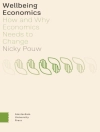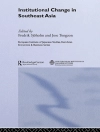Click ′Additional Materials′ to read the foreword by Jerald Hage
As straightforward as its title, How to Build Social Science Theories sidesteps the well-traveled road of theoretical examination by demonstrating how new theories originate and how they are elaborated. Essential reading for students of social science research, this book traces theories from their most rudimentary building blocks (terminology and definitions) through multivariable theoretical statements, models, the role of creativity in theory building, and how theories are used and evaluated. Authors Pamela J. Shoemaker, James William Tankard, Jr., and Dominic L. Lasorsa intend to improve research in many areas of the social sciences by making research more theory-based and theory-oriented.
The book begins with a discussion of concepts and their theoretical and operational definitions. It then proceeds to theoretical statements, including hypotheses, assumptions, and propositions. Theoretical statements need theoretical linkages and operational linkages; this discussion begins with bivariate relationships, as well as three-variable, four-variable, and further multivariate relationships. The authors also devote chapters to the creative component of theory-building and how to evaluate theories.
How to Build Social Science Theories is a sophisticated yet readable analysis presented by internationally known experts in social science methodology. It is designed primarily as a core text for graduate and advanced undergraduate courses in communication theory. It will also be a perfect addition to any course dealing with theory and research methodology across the social sciences. Additionally, professional researchers will find it an indispensable guide to the genesis, dissemination, and evaluation of social science theories.
Tabella dei contenuti
Preface
Foreword – Jerald Hage
1. Introduction: The Nature of Science
2. Theoretical Concepts: The Building Blocks of Theory
3. Theoretical Statements Relating Two Variables
4. Theoretical and Operational Linkages
5. Theoretical Statements Relating Three Variables
6. Theoretical Statements Relating Four or More Variables
7. Theoretical Models
8. Creativity and Theory Building
9. Using and Evaluating Theory
Appendix A: Guidelines for Preparing Tables and Figures
Appendix B: Acceptable Levels of Measurement for Various Statistics
References
Index
About the Authors
Circa l’autore
Dominic L. Lasorsa is an associate professor of journalism at the University of Texas at Austin. He received a bachelor of arts degree in journalism from St. Bonaventure University, a master of arts degree in journalism from the University of Texas at Austin and a doctor of philosophy degree in communication from Stanford University.In college, Lasorsa served as editor-in-chief of his school newspaper, The Bonaventure, and he worked at the Suffolk (N.Y.) Sun as a Dow Jones Newspaper Fund Editing Intern. Upon graduation, he entered the U.S. Air Force where he served as a radio communications specialist and a curriculum development specialist. He then worked as a reporter and editor at the Wichita (Kansas) Eagle and the Austin (Texas) American-Statesman. Before beginning his academic career, Lasorsa served as editor-in-chief of the Marble Falls (Texas) Highlander.Lasorsa studies and teaches communication theory and methods, focusing on political communication and media effects.He has published articles in numerous books, journals and other publications. His works have appeared in the Encyclopedia of International Media and Communications, the Historical Dictionary of Political Communication in the United States, the International Journal of Public Opinion Research, the Journal of Communication, the Journal of Media Economics, the Journal of Reading, Journalism and Mass Communication Quarterly, Journalism Studies, and the Newspaper Research Journal.Lasorsa was a co-author of the three-volume National Television Violence Study.With his partner, Richard Scroggins, and their dog, Boundary, Lasorsa lives in Spicewood, Texas, halfway between Austin and Marble Falls.Lasorsa was a co-author of the three-volume National Television Violence Study.
With his partner, Richard Scroggins, and their dog, Boundary, Lasorsa lives in Spicewood, Texas, halfway between Austin and Marble Falls.












